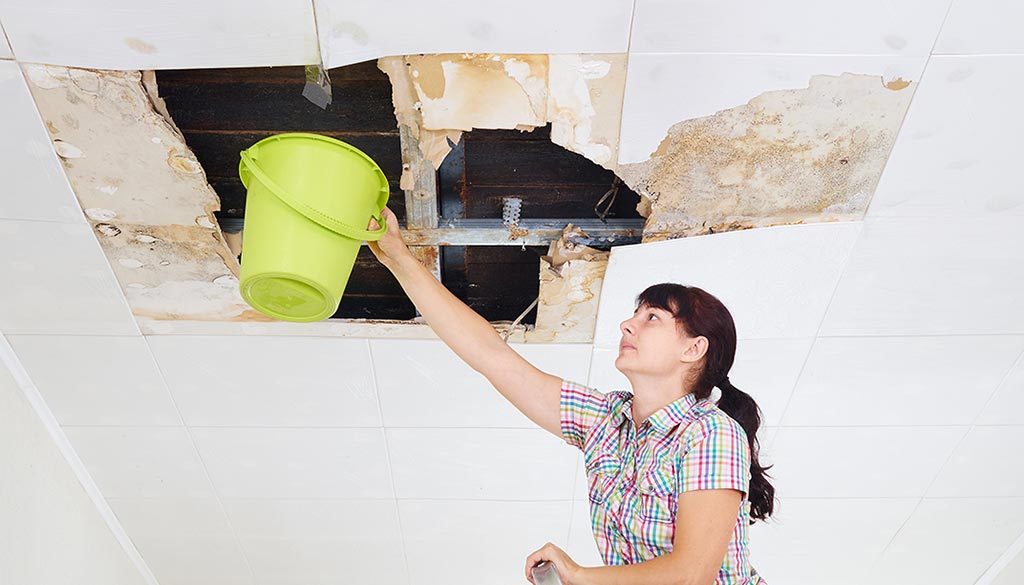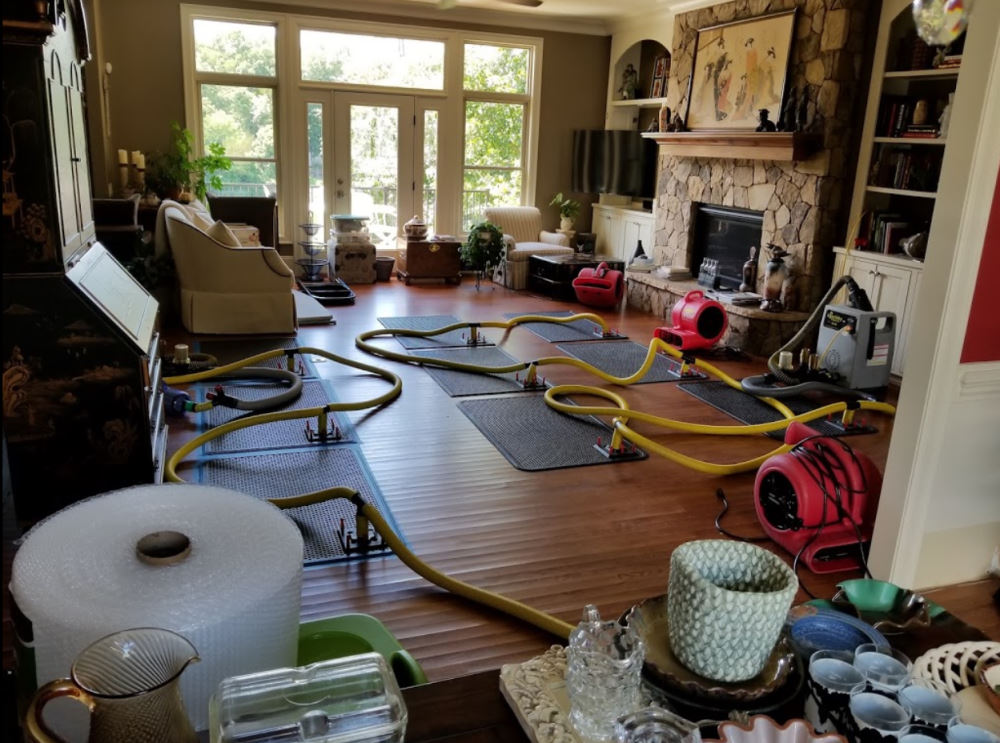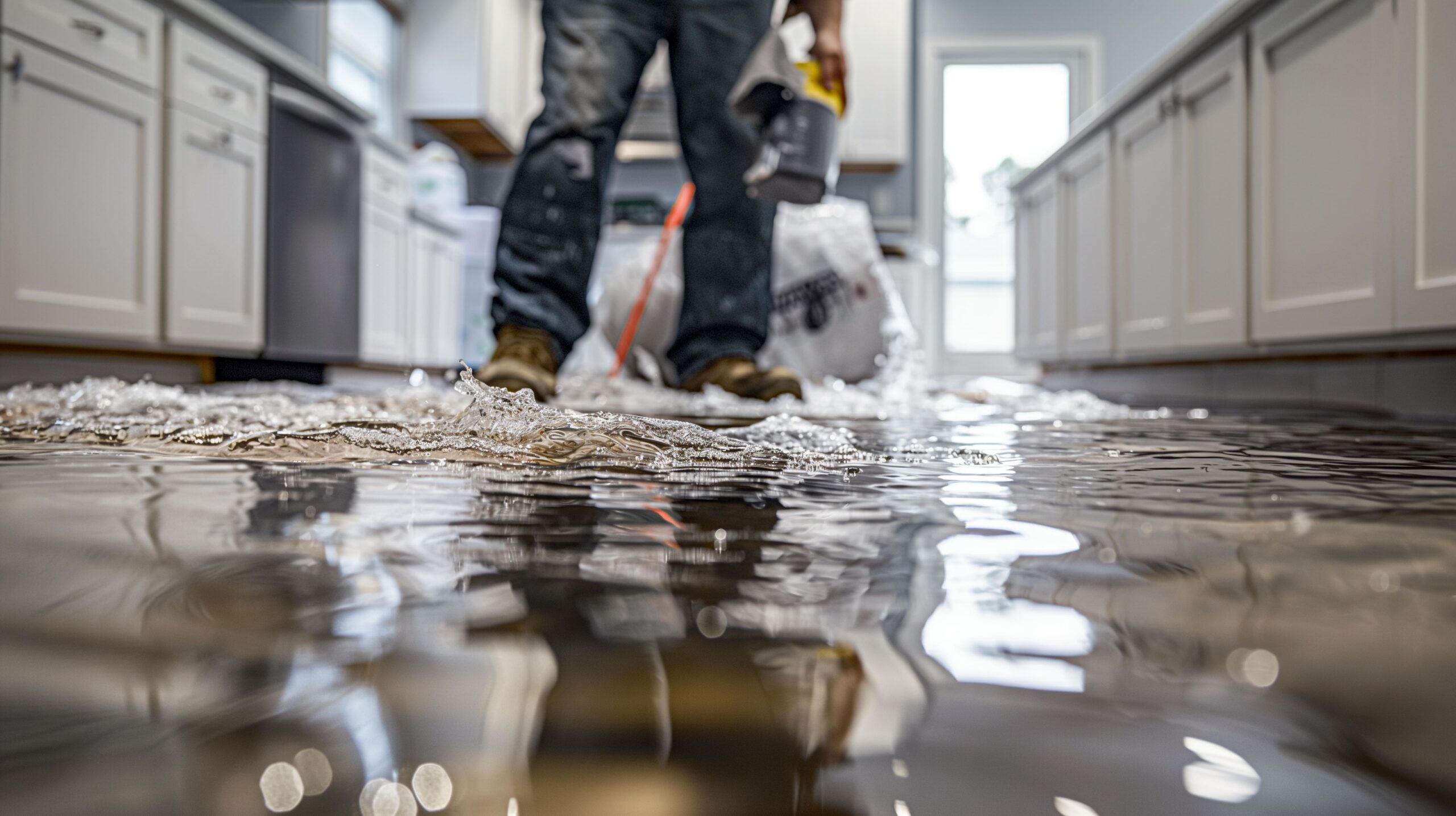What Happens If You Postpone Flood Damage Restoration? The Hidden Costs Explained
Wiki Article
Necessary Steps to Comply With for Efficient Water Damage Repair in your house
When confronted with water damage in your house, knowing the crucial steps for effective reconstruction can make all the difference. You need to evaluate the damages and guarantee safety prior to taking on the issue. Stopping the resource of water is vital, however it's simply the start. As soon as you have actually handled that, there's a collection of actions you have to take to shield your residential or commercial property from more issues. Allow's explore what you ought to do following.Evaluate the Damage
When you find water damage in your home, the first step is to analyze the damage thoroughly. Start by recognizing the resource of the water invasion. Look for leakages, burst pipes, or other issues creating the trouble. Next off, analyze the influenced areas for visible indicators of damages, including mold and mildew, staining, or bending growth. Do not fail to remember to look in covert places like behind wall surfaces or under floor covering, as water can seep into these areas unnoticed.Document the damage by taking clear photos and notes. When discussing the situation with your insurance policy service provider or reconstruction experts, this will assist you. Take note of the sort of materials impacted, as various materials call for various remediation approaches. Evaluate the extent of the damages. Is it minor or extensive? Recognizing the extent will certainly lead you in deciding whether to handle it yourself or call in the experts for an extra comprehensive reconstruction process.
Make certain Safety and security
Before you start any type of restoration job, assuring your safety is essential. Examine the problem of your home. If the water's deep or if you notice electric risks, don't get in the location. Switch off the power and gas supply to stop crashes. Wear protective gear like handwear covers, masks, and boots to shield on your own from impurities or mold.It's essential to stay familiar with your environments; watch for unsafe surfaces and sharp items. Treat it as harmful waste if the water is from a sewage backup. Maintain pets and youngsters far from impacted areas to avoid exposure.Once you have actually taken these preventative measures, you can wage the remediation procedure. Bear in mind, your safety and security precedes, and if you're ever not sure, it's best to seek advice from a professional. Taking these actions will certainly help assure you prepare to tackle the reconstruction securely and successfully.Quit the Resource of Water
After guaranteeing your security, the following step is to stop the source of water. Recognize where the leak is originating from. Maybe a burst pipeline, a defective device, and even hefty rainwater going into through a damaged roofing system. Transform off the primary water supply to your home to prevent additional flooding if it's a pipes problem. For appliances, disconnect them and turn off their water system valves.If the source is outdoors, like rain, try to divert it away from your home utilizing sandbags or various other barriers. For minor leakages, you might be able to use tape or a sealant briefly up until an expert can fix it. Remember, attending to the resource swiftly is essential to reducing damage and protecting against mold and mildew growth. As soon as you've stopped the water, you'll be in a much better placement to relocate on to the next action in the restoration process.
Remove Excess Water
Act swiftly to remove excess water, as standing water can cause much more comprehensive damage and mold and mildew growth. Collect your tools: a wet/dry vacuum cleaner, containers, and towels. If the water is shallow, you can utilize towels to take in the moisture. For much deeper water, a wet/dry vacuum cleaner is your best option. Make certain to empty the vacuum regularly to stay clear of overflow.If the water is contaminated, like from a sewage backup, put on protective equipment, consisting of masks and handwear covers, to maintain yourself secure. When you've removed as much water as feasible, look for covert pockets of moisture in corners and under furniture, as these can nurture mold.Don' t fail to remember to switch off electrical home appliances and power electrical outlets in wet locations to stop dangers. This initial action is important in reducing damages and setting the stage for an effective remediation procedure.Dry and Dehumidify the Area
When you have actually eliminated the excess water, it's necessary to completely dry and dehumidify the pop over here location thoroughly. Beginning by making use of dehumidifiers properly to draw moisture out of the air and stop mold and mildew development. Keep an eye on moisture degrees to ensure the area dries out entirely.Remove Standing Water
To effectively tackle water damages, you require to concentrate on removing standing water as swiftly as feasible. Beginning by gathering necessary tools, like a wet/dry vacuum or a pump, relying on the quantity of water. A vacuum must do the technique if the water is superficial. For larger amounts, a pump is extra reliable. While working, see to it to wear safety gear to keep on your own safe from pollutants. As you get rid of the water, take note of hidden areas like under furniture or in corners where water might accumulate. Your space will certainly begin to dry out when you've removed the majority. This step is necessary, as lingering water can result in mold and mildew development and extra considerable damage.Use Dehumidifiers Successfully
Exactly how can you effectively make use of dehumidifiers to completely dry and evaporate your room? Begin by putting your dehumidifier in one of the most affected location, preferably where water damage is most serious. Ensure to shut all home windows and doors to produce a sealed setting. Activate the dehumidifier and set it to the proper moisture level, normally around 30-50%. Vacant the water collection storage tank regularly, or take into consideration making use of a model with a continual drainage choice for convenience. Preferably, use fans to enhance air flow, aiding the dehumidifier job more successfully. Keep the dehumidifier running up until you're confident that the location is extensively dried, protecting against mold development and extra damages (Smoke Damage Restoration). This step is vital for effective water damage reconstructionDisplay Humidity Levels
Surveillance moisture levels is essential throughout the drying process, as it assists guarantee your area continues to be totally free from excess moisture. Buy a dependable hygrometer to track humidity precisely. Preferably, you want to preserve levels helpful site in between 30% and 50%. You might require to adjust your fans or dehumidifiers to enhance air flow if humidity readings increase above this array. Check the readings consistently, specifically in areas prone to dampness, like cellars or shower rooms. Take into consideration boosting ventilation or making use of additional dehumidifiers if you discover persistent high moisture. Remaining on top of these degrees not only accelerates the drying out procedure but also avoids mold and mildew development, ensuring your home remains risk-free and comfy.Tidy and Disinfect Affected Surfaces

Bring back and Fix Your Home
After cleansing and decontaminating the impacted locations, it's time to restore and repair your home. Begin by evaluating the damage. Inspect for architectural problems, like weakened walls or floorings, and deal with any essential repair services. Changing harmed drywall or flooring is crucial for both aesthetic appeals and safety.If your furniture or possessions were influenced, consider whether they can be recovered or require substitute. Clean or professionally bring back products where possible.Next, touch and paint walls up any kind of areas that require focus. This not just improves look but likewise safeguards surfaces from future water damage.Don' t neglect to examine your pipes and devices for leakages, making certain every little thing's operating correctly. Ultimately, think about mounting a dehumidifier to stop future dampness problems. By taking these steps, you'll restore your home to its previous splendor and produce a much safer living environment.Frequently Asked Questions
Just How Long Does Water Damages Remediation Usually Take?
Water damage remediation normally takes anywhere from a couple of days to a number of weeks, depending on the degree of the damages (Water Damage Repair). You'll intend to assess the situation swiftly to minimize additional issues and ensure proper remediationWill My Insurance Policy Cover Water Damages Repair Expenses?
Your insurance might cover water damage repair costs, however it depends upon your policy. Examine your coverage information and call your insurance representative to clarify what's consisted of and what you need to file a case.
Can I Take Care Of Water Damages Remediation Myself?
You can deal with water damages restoration yourself, yet it's vital to analyze the scenario. You could want to call specialists if it's comprehensive. Always focus on safety and assure you have actually obtained the right devices.What Are the Indicators of Hidden Water Damage?
You might observe indications of concealed water damage like warped wall surfaces, moldy odors, or discoloration. If your floorings really feel mushy or you spot mold, it's time to check out even more prior to the scenario gets worse.How Can I Avoid Future Water Damage in My Home?
To avoid future water damages in your house, you need to on a regular basis evaluate plumbing, seal cracks, maintain seamless gutters, and guarantee correct drainage. Installing a sump pump and moisture barriers can also aid keep your space completely dry. When you find water damage in your home, the initial step is to analyze the damages thoroughly. Act promptly to eliminate excess water, as standing water can lead to much more considerable next page damage and mold development. To effectively take on water damages, you need to focus on removing standing water as rapidly as feasible. As you remove the water, pay focus to concealed areas like under furniture or in corners where water could accumulate. Water damages repair typically takes anywhere from a few days to numerous weeks, depending on the level of the damage.Report this wiki page